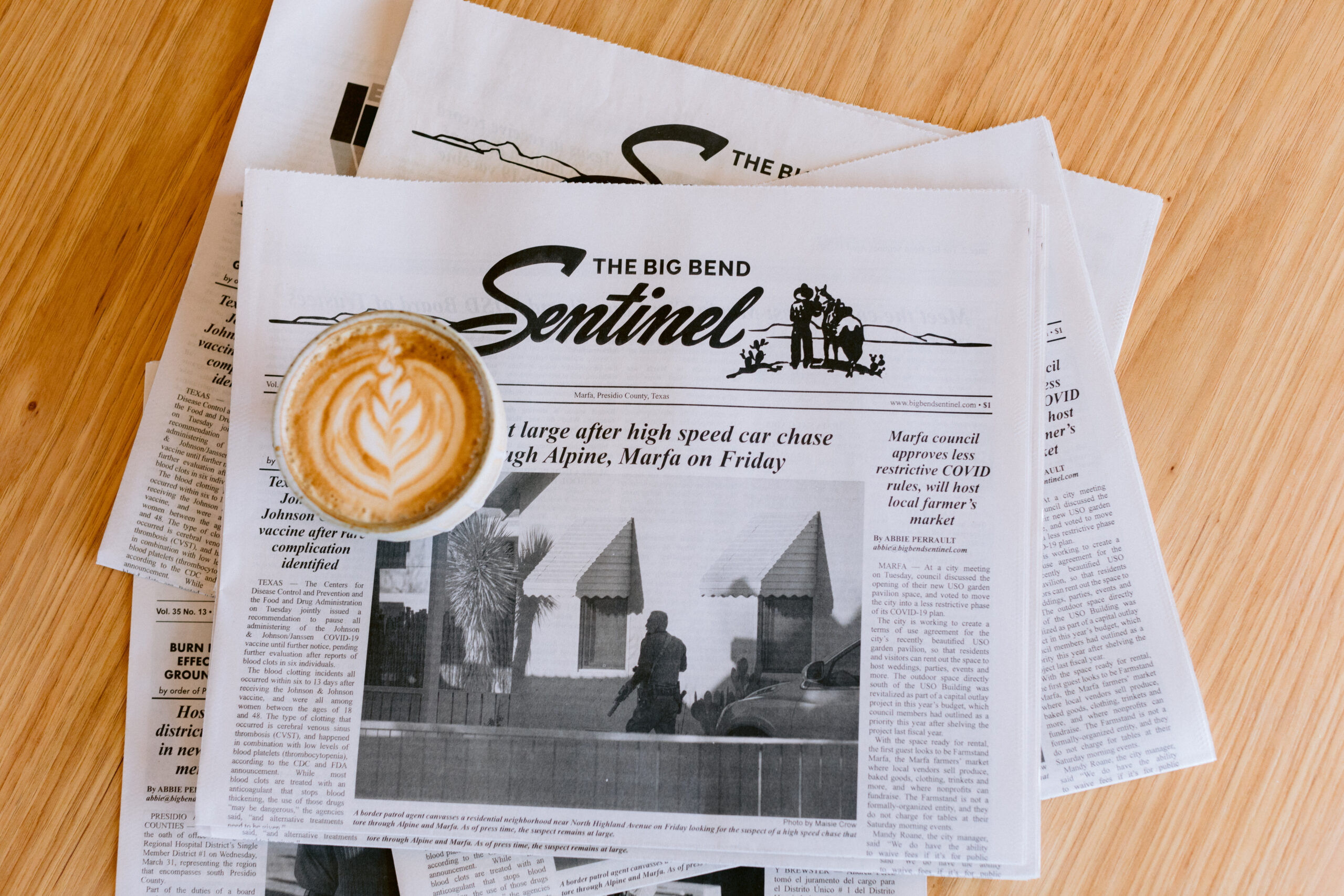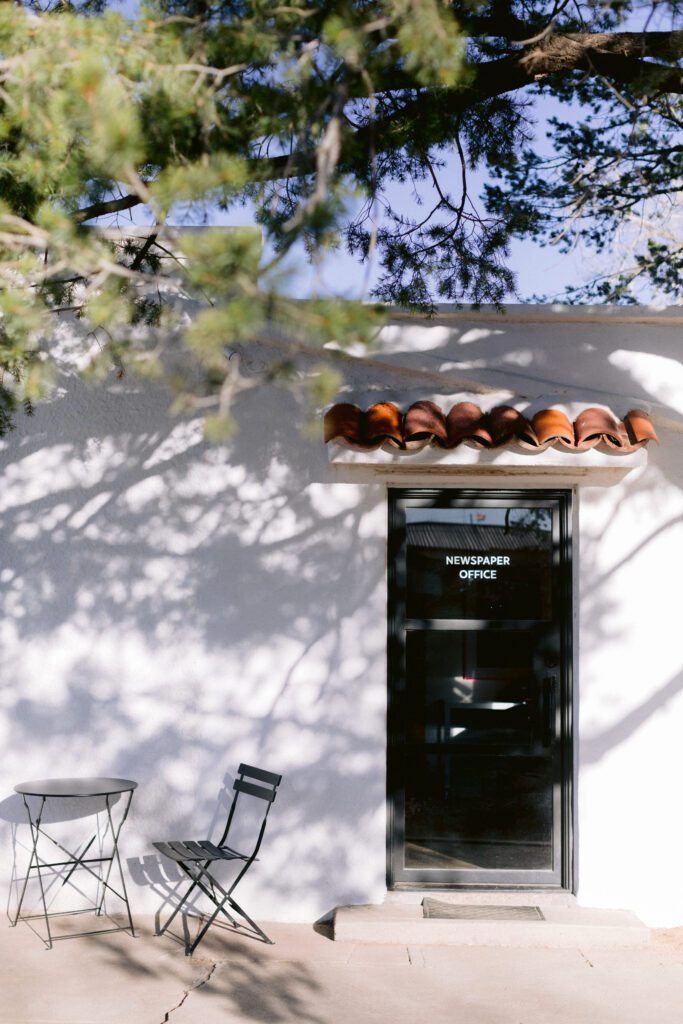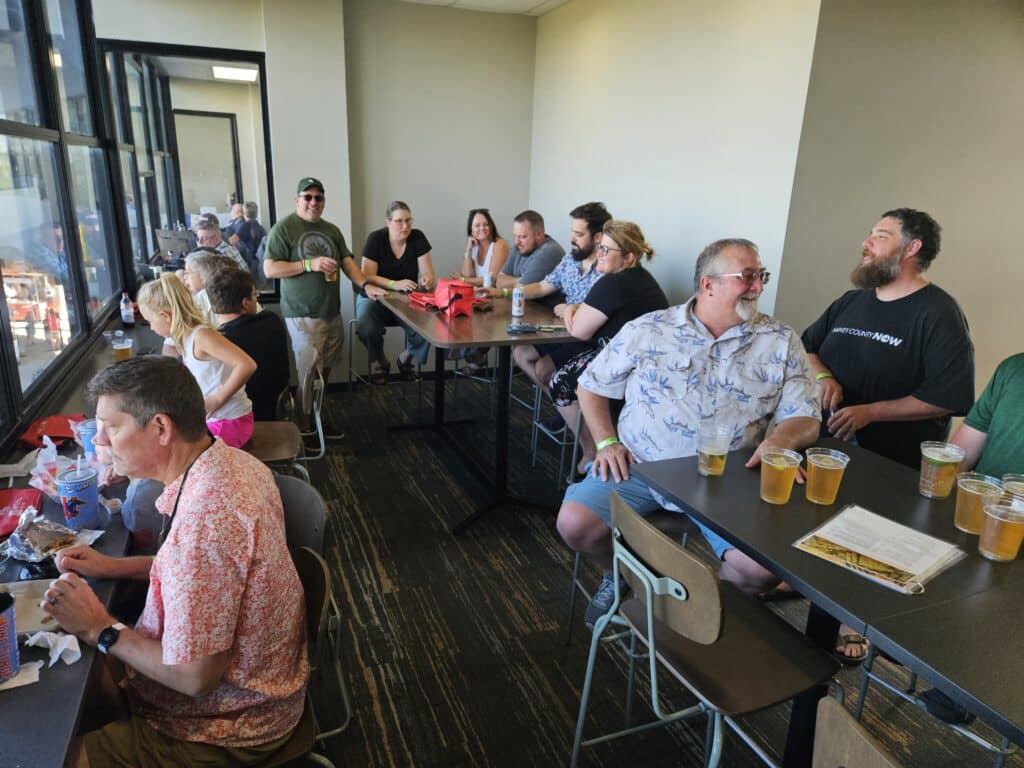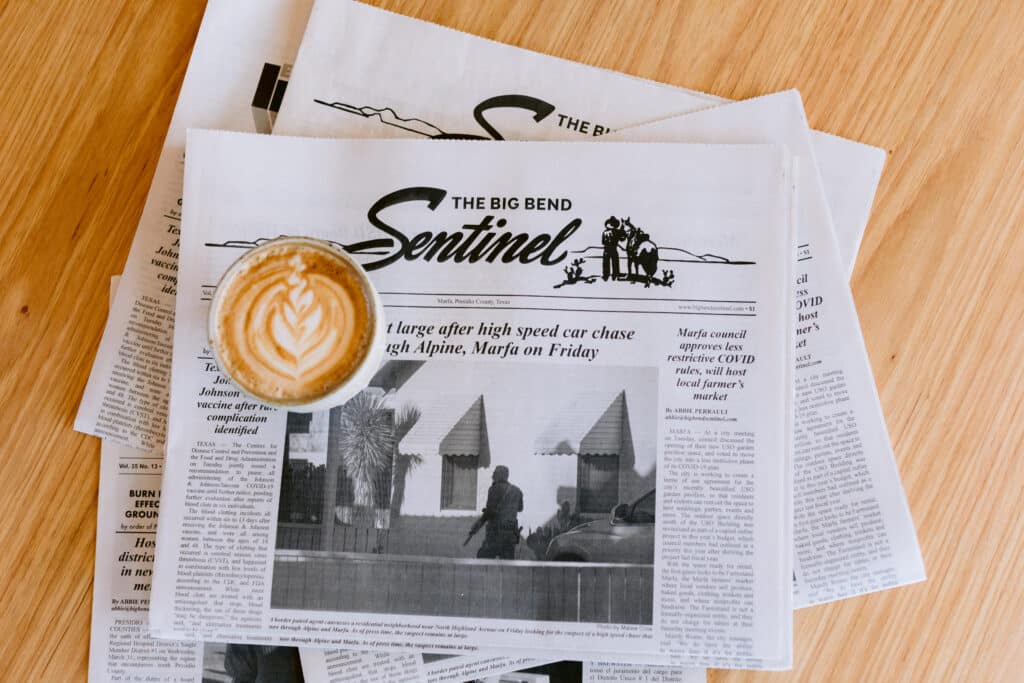
Photo by Jona Christina
Why is it that local journalism has always depended on the same two revenue streams of ads and subscribers? If one of a newspaper’s jobs is to build community by capturing the history of a place and its people, why should we be confined to only print and digital news and information products? These two big, intertwined, existential questions guided our thinking and ultimately evolved our “maybe we’re interested” into an emphatic “yes” to one of the biggest decisions my wife and I have made to date.
In 2018, Rosario and Robert Halpern, the owners of the two local newspapers in our small, rural town of Marfa, Texas, were retiring after thirty years. Did my wife, an award-winning documentary filmmaker and photojournalist, and I, a brand and business strategist, want to take over our region’s almost century-old tradition of local journalism?
We weren’t strangers to the research and the doom and gloom about the demise of our democracy going hand in hand with the disappearance of local journalism. What we saw wasn’t something that needed saving; instead, we saw an incredibly important, undervalued, under-leveraged asset waiting to be unlocked. Maisie and I aren’t writers and we would be keeping our careers, so driving more top-line revenue to pay for more journalists at a better wage than the model we’d be inheriting was going to be a priority. If we were going to take this on we’d need to get creative and do it differently.
Sure, we’d be buying a newspaper, but it was so much more than that. It was a brand. The oldest business in town next to the bank. A nameplate with incredible iconography. Almost 100 years of archives of far west Texas. A publication loved by locals and visitors alike in a tiny town with a tourism-based economy. But the building wasn’t for sale, so we’d need a new place — one that could help us lean into this idea of diversification.

Photo by Jona Christina
Roughly one year after our first conversation with the Halperns, on July 4th, 2019, we published our first newspapers, The Big Bend Sentinel and Presidio International. We opened the doors to The Sentinel, a cafe, retail shop and event space. In what was previously a general store and horse stables, a funeral home, and most recently a West Texas dance hall, we gave new life to a building with roots in bringing people together. We’d get out of just being in the news and information business and get into the business of building a brand that builds community. It was only the beginning.
Getting creative with a solution
Our town and region had been losing population while tourist visits continued to increase. Modus operandi would mean a capped ceiling so growth would have to come from taking what existed and building on it. The cadence of a weekly product was more than enough for a town of less than 2,000 and an area with roughly 18,000, so leaning into more news and information didn’t provide much utility to our community nor us.

Photo by Jona Christina
Why has journalism always existed in this paradigm of talking at, not talking with people? What if we provided a place for people to gather and exchange information in the name of being provided news and information? Journalists have traditionally been locked away in impenetrable offices doing their work. What if we flipped the script?
Questioning what existed and creating what didn’t led us to our model. Lacking any preconceived notions about what it all had to look like and how it all had to work gave us a lot of freedom to get creative. Would we look for a building that would be part Airbnb and part newspaper? What if we had a big coworking space where people paid a monthly or daily fee? Some ideas were too exclusionary, and we couldn’t make the economics of others work. In the end we landed on an idea that checked all of our boxes:
- Reinvigorate a piece of real estate
- Fill a gap in the market
- Provide a way for all people in the community to come together and connect in myriad ways
Challenges from the start
Doing anything new and different opens you up to unknowns and a ton of criticism, especially in a small town. Combine that with people’s dislike of change, especially when it comes to their hometown newspaper, and you have yourself in quite a quagmire.

Photo by Jona Christina
To announce the opening of the space and a new chapter, and to say thanks to the Halperns for their 30 years of leadership, we threw a party ten days before the transition. Within that first week, a longtime columnist with national acclaim and a feverish following passed away suddenly. Another told us they would no longer contribute because we didn’t appreciate the Halperns enough in our speech. We could have lived in the negative or turn all of the questioning and uncertainty into a positive. We opted for the latter. Our first issue was dedicated to the icon who passed, and it took another year for the other columnist to apologize for how they handled themselves while thanking us for improving the product in a short time.
While we knew we could do a great job with the journalism given my wife’s expertise, we decided to get into two businesses we knew little about — hospitality and retail. Naivety was a plus. Idealistic? Definitely. Right place. Right time. Right experience. Right people. A mix of those, for sure. But we also believed in ourselves and had conviction about the idea, which for any entrepreneurial endeavor is key. It carried us through the early days, especially as we navigated the pandemic, pivoting more than a few times. While hours, menus and offerings have changed over the years, our belief in the brand and the business hasn’t wavered. When you’re a business with a mission, it becomes the only thing that matters.
Creating a third space
We are a business based on consistency. We’re open 7 days a week from 7:30 a.m. to 3 p.m. In a town where basically nothing is open every day, this is intentional. Our readership locally has also grown — folks of the Big Bend Region say that we’re the only place where you can find real news. Our office is always open so it’s a conversation with, not at, our community. For example, we launched a recent series on mental health in our rural America. To kick this off, we had a launch party.
The newsroom and the cafe are intimately tied together. They’re in the same building, and employees work on both businesses. Reporters work catered events and share the back office. We see them as one and the same, though there are separations for legal purposes, such as the Sentinel, LLC business having a TABC license to sell alcohol. The papers’ West Texan Media Group LLC has a separate address, office door, etc. so that law enforcement cannot perform legal unannounced checks of the paper, just the space.

Photo by Jona Christina
The setup also gave us a new audience to serve: tourists. Likely because of the pandemic, The Sentinel’s ability to generate revenue progressed faster than the paper so we’ve spent more time in our first five years expanding on and perfecting the retail business than we have publishing. It’s also given us the liberty to have guest chefs activate the space, try our hand at a chef residency program and host art shows that all provide for locals and tourists alike.
Serving the tourists daily in the cafe has provided great insight into what they want and how best to serve them, something we never could have imagined. Now, as we start to explore publishing additional products that will drive recurring revenue, our intimate understanding of this key growth audience gives us a better chance at success.
Putting it into practice for yourself
If you’ve been considering the idea of something physical or, well, just different than the conventional, here are some things to consider before you start.
- Whom are you for? This is one of the court tenants of building a brand. If you don’t know who you’re serving, how can you know what to give them? How can you build a product around what they need?
- What does your community need? Where do people come together, or how could they come together under your idea? Opening another coffee shop if there are already five probably isn’t a good idea. But third spaces can be more than just a place for food and drink.
- Who are your community leaders and your entrepreneurs? Running a local journalistic endeavor is challenging. Trying to do all of this on your own isn’t something I’d recommend. If you’re a journalist who now finds yourself in the publisher, general manager or owner seat, you likely don’t have years of practical business experience. That’s more than okay. Whether for- or non-profit, community members believe in what you’re doing. There are entrepreneurs aplenty. Find folks that you vibe with, are strong believers in the institutions of journalism and serving community and who compliment you and your strengths.
- How will it be a business? Yes, you need to be for your community, but if your business idea isn’t rooted in driving real revenue, it will ultimately drain finances and resources, leaving you destined to fail from the start. You also need to make sure there’s an actual want and need for what you’re building. Don’t lose sight of having product-market fit. This is also where a partnership with an entrepreneur or business person can come in handy.
- How do you create deeper, more meaningful connections? If you are a weekly or monthly product, how do you become a part of someone’s daily life? How do you create more relevant touch points that matter, not just more newsletters for newsletters’ sake?
- Lastly, reach out. We’ve created a playbook we think is universal for building an ecosystem of engaging, diverse revenue streams all centered around local journalism that supports one brand, business and community. I’m happy to chat more in-depth about our experience or discuss how to approach your market and community.
Max Kabat is the Publisher and Co-Owner of The Big Bend Sentinel, a weekly newspaper covering the borderlands region of far west Texas, and The Sentinel, a mixed-use retail ecosystem that supports it, in Marfa, TX. He’s also a Co-Founder of goodDog, a brand and business strategy shop that helps founder-built brands sustainably grow via story by articulating their goodIdea and then pulling it through the rest of the business.
Share with your network
4 ways outlets are convening community — and seeing loyalty and revenue follow
You also might be interested in:
As research continues to inform this slice of the news industry, we’ll continue learning, too. Who gets to be called a journalist in 2025 and beyond? What is the future of trustworthy information, especially considering the access to and trust for online content creators? How might journalism adapt to the rise, or co-opt the styles, of news influencers?
What if we started looking at our output as a product, not a service? Too often, we think "product" means a fancy app or a new website. But product isn’t about tech. It’s about intention.
When we began asking what kind of stories still mattered to Baca County, we realized many of them weren’t “breaking news” but generational memory. And the paper was the last remaining platform that treated those memories with care and context.







